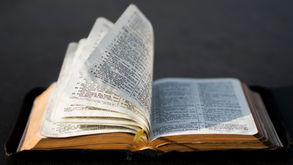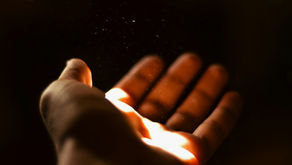From Baha’i Center to Ayatollah Khamenei Mosque
- Uplifting Words

- Jul 18, 2019
- 4 min read

On July 8, 2013, a mosque was opened at the site of the artistic arena in Tehran called “The Ayatollah Khamenei Mosque.” What we are discussing here is neither the architecture nor the name of the mosque, but its construction site.
The artistic arena of the Islamic propaganda organization today is located in Hafez Street, where once the Baha’i Center of Tehran was located. This building was built in a lush green area along the street of Persepolis (currently Taleghani). Inside the courtyard, the two-story building was built in a hall with long ceilings and a great deal of decorative plastering. The Baha’i institution of Iran decided on the construction of this administrative/religious building in 1926. Two very well-known Baha’is – Siavash Sefidpoosh, under the supervision of Gholam Reza Amin – bought a mansion belonging to Zia’s heirs. Three years later, in 1929, the Baha’i community of Iran decided to transfer its ownership document, to Shoghi Effendi, who was the great grandson of Baha’u’llah the founder of the Baha’i Faith, and the grandson of Abdul-Baha, Baha’u’llah’s son. In April 1931, Asadollah Fazil Mazandarani proposed the construction of the Baha’i Center and Shoghi Effendi approved it. Thus, on May 15, 1931, its first structure was installed by Gholam Reza Amin and Mirza Valihkan Varqa.
Over the years, the administrative offices, auditorium and gardens of the Baha’i Center were completed and equipped. In those years, rumors had been circulated that the Baha’i Center was built over the burial site of Tahereh Qurrat al-Ayn, a famous Babi poetess, a rumor that had no historical basis and was only part of the process of creating greater sensitivity to the Baha’i Center of Tehran.
During those years, most Shi’ite clerics in Iran issued statements against the Center. One of them was Ayatollah Abolqasem Kashani, who said that if a mosque is not built at this location, he and those who support him would destroy the Center. In addition, during this period, in order to keep the peace among the clerics a number of top officials in the Shah’s Army promised to confiscate and destroy the Baha’i Center. Lieutenant General Ahmad Amir Ahmadi, the interior minister of the time, and Maj. Gen. Ibrahim Zarrabi, the commander of the time of the Tehran Military Division, were among the military personnel who met with Ayatollah Kashani and promised him that they would seize the Baha’i Center.
In the years after the events of July 1953, the relationship of Mohammad Reza Shah Pahlavi with the clergy had expanded; as Gholam Reza Musavar Rahmani writes in his memoir, Kohneh Sarbaz, Lieutenant General Nader Batmanaghlych, the head of the army headquarters, later the governor of Khorasan and the deputy of the Astan Quds Razavi, under a direct order from Mohammad Reza Shah Pahlavi, visited Ayatollah Kashani, with whom he discussed the issue of “destroying the gathering place of the Baha’i religious sect,” but this time, it was at his own initiative.

Around the same time, during Ramadan in 1955, Taghi Falsafi in his radio speeches encouraged and enticed people to unite against the Baha’i Faith and even to destroy Baha’i places. He represented Ayatollah Borojerdi’ and had permission from the Shah for his speeches.
Falsafi’s speeches led to good results for them, in the end, as the military commander of the time, Lt. Gen. Timur Bakhtiar declared in a statement: “Because the demonstration and propaganda of the Baha’i cult have triggered public sentiment, it is instructed that in order to maintain public order the police force must occupy the centers of propaganda of this cult, which is called the Hazirat Al-Quds (Baha’i Center). The government, in the implementation of the plans of His Majesty, pays attention to the feelings and desires of the people, always mindful of the comfort and fulfillment of public needs”.
After this statement, military forces entered the Center. But this was not enough for the religious people, and they gathered in front of the Center with the slogan “Mahdi Come”. The gatherings and protests got to the point where the troops led by, Nader Batmanaghlych and Brigadier Timur Bakhtiar moved in. Brigadier Timur Bakhtiar himself using an ax demolished a part of the assembly hall that had a large dome. In this way, the dome designed by Hooshang Seihoun was destroyed along with the assembly hall.
Later, Timur Bakhtiar turned this place into part of the second pillar of the army headquarters, and in the following years, even some of the prisoners were transferred there. Jafar Shajoni was a cleric who, years later, opposed the Shah and wrote in part of his memoirs from his time of detention: “Then they brought us to the Baha’i Center in Hafez street. We were taken to the corner of the prison. It was winter and cold. It was around the month of December, and we were shivering from the cold. They had destroyed the windows and there were none left at all.”
After the victory of the Islamic Revolution in 1978, the Baha’i Center was confiscated. The “Center for the Islamic Cultural Movement”, which was later transformed into the “artistic arena” under the direction of the Islamic Propaganda Organization, is now located in the same place as the Baha’i Center. Now, six years have passed since the day when a mosque named after Ayatollah Khamenei was built in this location. This is the same Ayatollah who declared Baha’is to be “unclean”, though he believes in his religious teachings: The prayer of a usurper who wrongfully seizes the property of someone else is void.




















